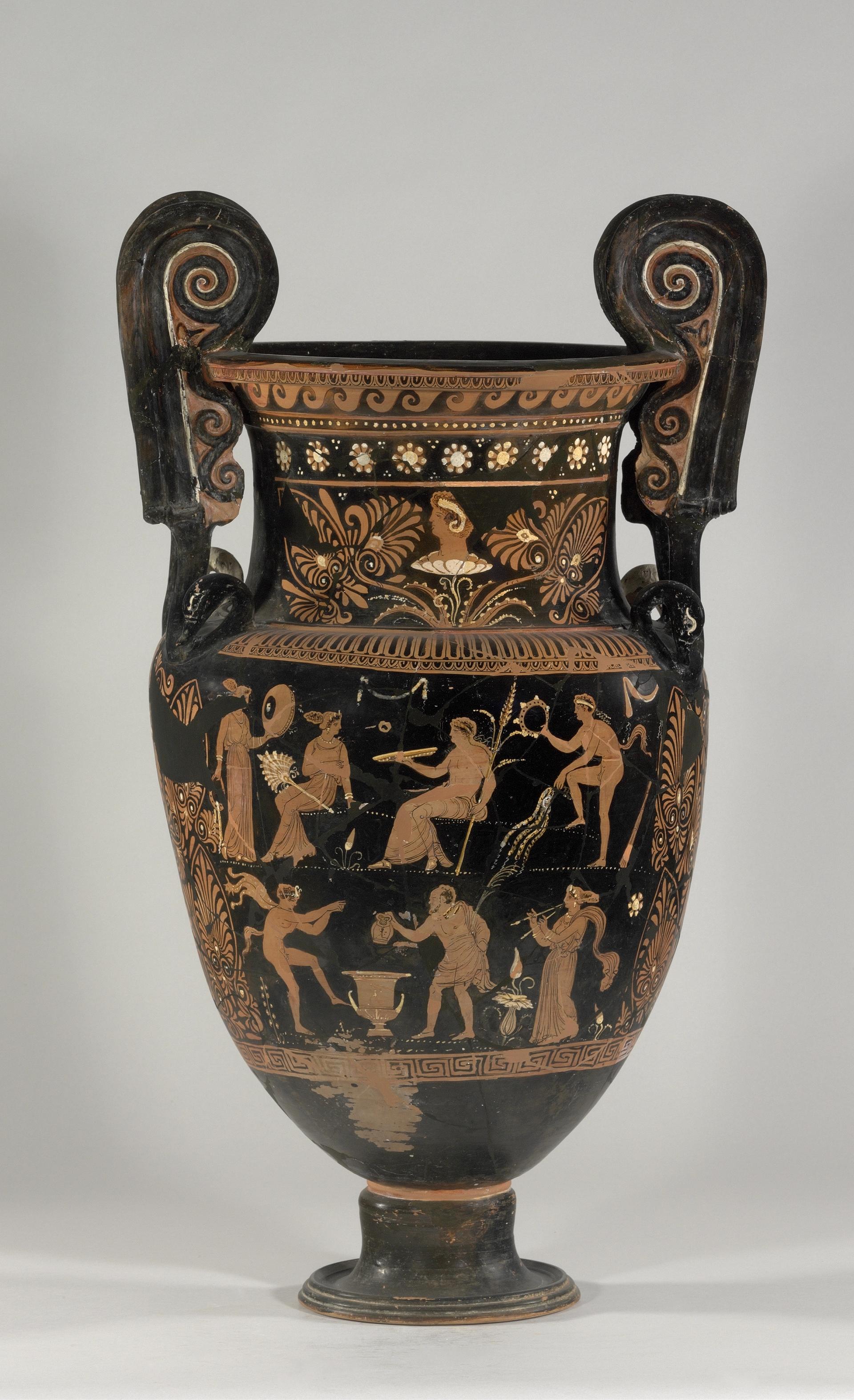Berlin’s Altes Museum has returned 25 antiquities, including 21 Apulian vases, that are believed to have been illegally excavated and smuggled out of Italy several decades ago.
The German culture minister Claudia Roth handed the objects over to her Italian counterpart, Gennaro Sangiuliano, at a ceremony in Berlin today. As a gesture of gratitude for the voluntary restitution, Italy is responding with the long-term loan of two painted panels from Lucanian graves and bronze armour from the archaeological museums of Paestum and Naples.
Roth described the returns as “an example of what cultural heritage protection means concretely: it’s a question of protecting cultural heritage that is key to our identities from plunder, illegal excavation, theft, smuggling and the illegal trade.”

Apulian volute crater, around 340 BC © Antikensammlung / Johannes Laurentius
Berlin’s antiquities collection purchased the 21 Apulian vases in 1984 from the Basel art dealer Christoph F. Leon. The previous owner was listed as a Geneva family who had had possession of them since 1889. But during investigations into the notorious Italian antiquities smuggler Giacomo Medici, polaroid photographs of four of the vases were found in his Geneva office. Medici was convicted in 2004.
“We are convinced that it is right to give these objects back,” Hermann Parzinger, the president of the Prussian Cultural Heritage Foundation, tells The Art Newspaper. “Four of them are proven to have been from illegal excavations—with the others it is not absolutely certain, but there are grounds for strong suspicion.”
Although the remaining 17 vases are not proven to be looted, they are so similar to the other four that it is presumed they were stolen from the same grave, Parzinger says. The vases date from around 340 BC and are believed to be from the area of Foggia in northern Apulia, where they were buried in the graves of the wealthy. It is also a region that has suffered extensive illegal excavations over the decades.
The return loans from Italy of the Lucanian paintings and bronze armour were agreed upon by curators from Berlin and Italy with a view to selecting objects that are either missing or under-represented in Berlin’s museums, says Andreas Scholl, the director of the antiquities collection.
“These objects illustrate the intensive, often warlike relations between the Greeks and indigenous Italian people in the southern part of the Apennine peninsula at this time,” the Prussian Cultural Heritage Foundation said in a statement. “Painting in particular is not represented in Berlin’s antiquities collection, so this is an outstanding enrichment of our collection.”
Four further objects with different provenances—three of them also connected to Medici—are also being returned to Italy.
Berlin’s state museums in 2023 began a systematic investigation of the provenance of the state’s archaeological collections with a view to repatriating objects that were illegally excavated or exported from their place of origin.
A pilot project involving researchers from Berlin and Turkey is examining the provenance of objects from archaeological sites at Sam’al, Didyma and Samarra that are currently located in the collections of three Berlin collections: the Museum of Islamic art, Museum for the Ancient Near East and the classical antiquities collection, Berlin museum officials said.


